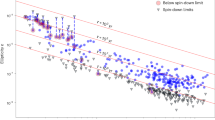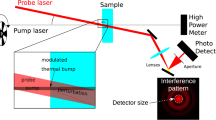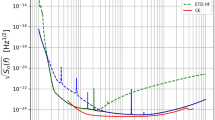Abstract
The recent detections of gravitational waves (GWs) reported by the LIGO and Virgo collaborations have made a significant impact on physics and astronomy. A global network of GW detectors will play a key role in uncovering the unknown nature of the sources in coordinated observations with astronomical telescopes and detectors. Here we introduce KAGRA, a new GW detector with two 3 km baseline arms arranged in an ‘L’ shape. KAGRA’s design is similar to the second generations of Advanced LIGO and Advanced Virgo, but it will be operating at cryogenic temperatures with sapphire mirrors. This low-temperature feature is advantageous for improving the sensitivity around 100 Hz and is considered to be an important feature for the third-generation GW detector concept (for example, the Einstein Telescope of Europe or the Cosmic Explorer of the United States). Hence, KAGRA is often called a 2.5-generation GW detector based on laser interferometry. KAGRA’s first observation run is scheduled in late 2019, aiming to join the third observation run of the advanced LIGO–Virgo network. When operating along with the existing GW detectors, KAGRA will be helpful in locating GW sources more accurately and determining the source parameters with higher precision, providing information for follow-up observations of GW trigger candidates.
This is a preview of subscription content, access via your institution
Access options
Access Nature and 54 other Nature Portfolio journals
Get Nature+, our best-value online-access subscription
$32.99 / 30 days
cancel any time
Subscribe to this journal
Receive 12 digital issues and online access to articles
$119.00 per year
only $9.92 per issue
Buy this article
- Purchase on SpringerLink
- Instant access to full article PDF
Prices may be subject to local taxes which are calculated during checkout



Similar content being viewed by others
References
Abbott, B. P. et al. Observation of gravitational waves from a binary black hole merger. Phys. Rev. Lett. 116, 061102 (2016).
Hulse, R. A. & Taylor, J. H. Discovery of a pulsar in a binary system. Astrophys. J. 195, L51 (1975).
Taylor, J. H. & Weisberg, J. M. Gravitational radiation and the binary pulsar. Astrophys. J. 253, 908 (1981).
Abbott, B. P. et al. GW151226: observation of gravitational waves from a 22-solar-mass binary black hole coalescence. Phys. Rev. Lett. 116, 241103 (2016).
Abbott, B. P. et al. GW170104: observation of a 50-solar-mass binary black hole coalescence at redshift 0.2. Phys. Rev. Lett. 118, 221101 (2017).
Abbott, B. P. et al. GW170608: observation of a 19 solar-mass binary black hole coalescence. Astrophys. J. Lett. 851, L35 (2017).
Abbott, B. P. et al. GW170814: a three-detector observation of gravitational waves from a binary black hole coalescence. Phys. Rev. Lett. 119, 141101 (2017).
Abbott, B. P. et al. GW170817: observation of gravitational waves from a binary neutron star inspiral. Phys. Rev. Lett. 119, 161101 (2017).
Aasi, J. et al. Advanced LIGO. Class. Quantum Gravity 32, 074001 (2015).
Acernese, F. et al. Advanced Virgo: a second-generation interferometric gravitational wave detector. Class. Quantum Gravity 32, 024001 (2015).
Abbott, B. P. et al. Multi-messenger observations of a binary neutron star merger. Astrophys. J. Lett. 848, L12 (2017).
Mizuno, J. et al. Resonant sideband extraction: a new configuration for interferometric gravitational wave detectors. Phys. Lett. A 175, 273 (1993).
Somiya, K. Detector configuration of KAGRA—the Japanese cryogenic gravitational-wave detector. Class. Quantum Gravity 29, 124007 (2012).
Kawashima, K. Laser Interferometer (TENKO-10 and -100) for Gravitational Wave Antenna Development Report No. 640 (Institute of Space and Astronautical Science, 1991).
Sato, S. et al. High-gain power recycling of a Fabry–Perot Michelson interferometer for a gravitational-wave antenna. Appl. Opt. 36, 1446 (1997).
Tsubono, K. in Gravitational Wave Experiments (eds Coccia, E., Pizzella, G. & Ronga F.) 112–114 (World Scientific, Singapore, 1995).
Ando, M. et al. Stable operation of a 300-m laser interferometer with sufficient sensitivity to detect gravitational-wave events within our Galaxy. Phys. Rev. Lett. 86, 3950 (2001).
Sato, S. et al. Ultrastable performance of an underground-based laser interferometer observatory for gravitational waves. Phys. Rev. D 69, 102005 (2014).
Ando, M. et al. Analysis methods for burst gravitational waves with TAMA data. Class. Quantum Gravity 21, S1679 (2004).
Christensen, N. et al. LIGO S6 detector characterization studies. Class. Quantum Gravity 27, 194010 (2010).
Uchiyama, T. et al. Reduction of thermal fluctuations in a cryogenic laser interferometric gravitational wave detector. Phys. Rev. Lett. 108, 141101 (2012).
Kuroda, K. et al. Large-scale cryogenic gravitational wave telescope. Int. J. Mod. Phys. D 8, 557 (1999).
Akutsu, T. et al. Construction of KAGRA: an underground gravitational-wave observatory. Prog. Theor. Exp. Phys. 2018, 013F01 (2018).
Takeda, H. et al. Polarization test of gravitational waves from compact binary coalescences. Phys. Rev. D 98, 022008 (2018).
Abbot, B. P. et al. Prospects for observing and localizing gravitational-wave transients with Advanced LIGO, Advanced Virgo and KAGRA. Living Rev. Relativ. 21, 3 (2018).
Miller, J. et al. Prospects for doubling the range of Advanced LIGO. Phys. Rev. D 91, 062005 (2015).
Degallaix, J. Advanced Virgo+ Preliminary Studies VIR-0300A-18 (Virgo Collaboration, 2018).
Punturo, M. et al. The Einstein Telescope: a third-generation gravitational wave observatory. Class. Quantum Gravity 27, 194002 (2010).
Abbott, B. P. et al. Exploring the sensitivity of next generation gravitational wave detectors. Class. Quantum Gravity 34, 044001 (2017).
Acknowledgements
This work was supported by MEXT, JSPS Leading-edge Research Infrastructure Program, JSPS Grant-in-Aid for Specially Promoted Research 26000005, JSPS Grant-in-Aid for Scientific Research on Innovative Areas 2905: JP17H06358, JP17H06361 and JP17H06364, JSPS Core-to-Core Program (A. Advanced Research Networks), JSPS Grant-in-Aid for Scientific Research (S) 17H06133, the joint research programme of the Institute for Cosmic Ray Research, University of Tokyo, National Research Foundation (NRF) grant of Korea and Computing Infrastructure Project of KISTI-GSDC in Korea, the LIGO project, and the Virgo project. The authors appreciate M. Karouzos for his kind feedback to improve the draft.
Author information
Authors and Affiliations
Consortia
Contributions
C. Kim, Y. Michimura, H. Shinkai and A. Shoda were responsible for writing the first draft of the manuscript and incorporated comments from the collaboration in the course of completing the manuscript. All members of the KAGRA collaboration were responsible for the scope and scientific facts of the manuscript, including data analysis and the resulting figures.
Corresponding authors
Ethics declarations
Competing interests
The authors declare no competing interests.
Additional information
Publisher’s note: Springer Nature remains neutral with regard to jurisdictional claims in published maps and institutional affiliations.
Rights and permissions
About this article
Cite this article
KAGRA collaboration. KAGRA: 2.5 generation interferometric gravitational wave detector. Nat Astron 3, 35–40 (2019). https://doi.org/10.1038/s41550-018-0658-y
Received:
Accepted:
Published:
Issue date:
DOI: https://doi.org/10.1038/s41550-018-0658-y
This article is cited by
-
Functional Yb-doped fiber with a bat-type refractive index distribution for beyond kilowatt all-fiber single-frequency laser amplification
Light: Science & Applications (2025)
-
Optical sensitivities of current gravitational wave observatories at higher kHz, MHz and GHz frequencies
Scientific Reports (2025)
-
An interference-based method for the detection of strongly lensed gravitational waves
Nature Astronomy (2025)
-
Acceleration noise due to space magnetic field for heliocentric gravitational wave detector
Scientific Reports (2025)
-
Denoising and detection for binary black hole gravitational waves in the context of the Einstein Telescope
Science China Physics, Mechanics & Astronomy (2025)



